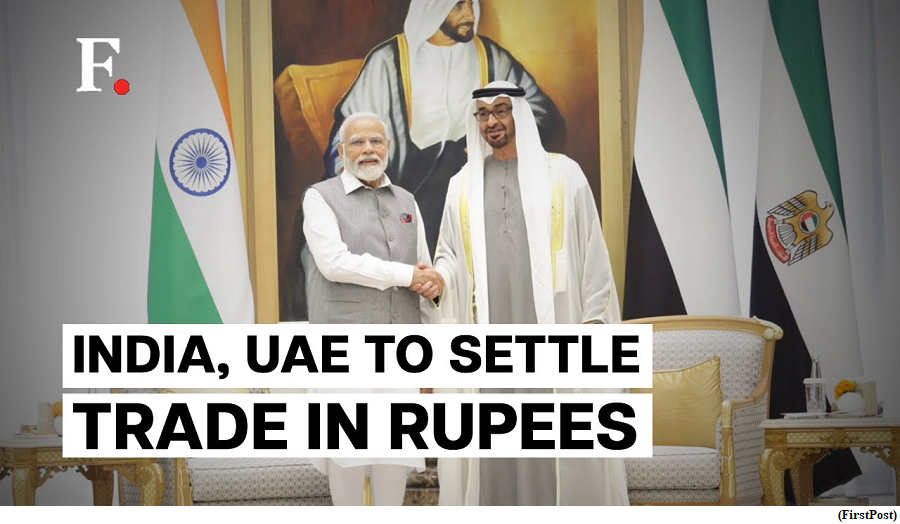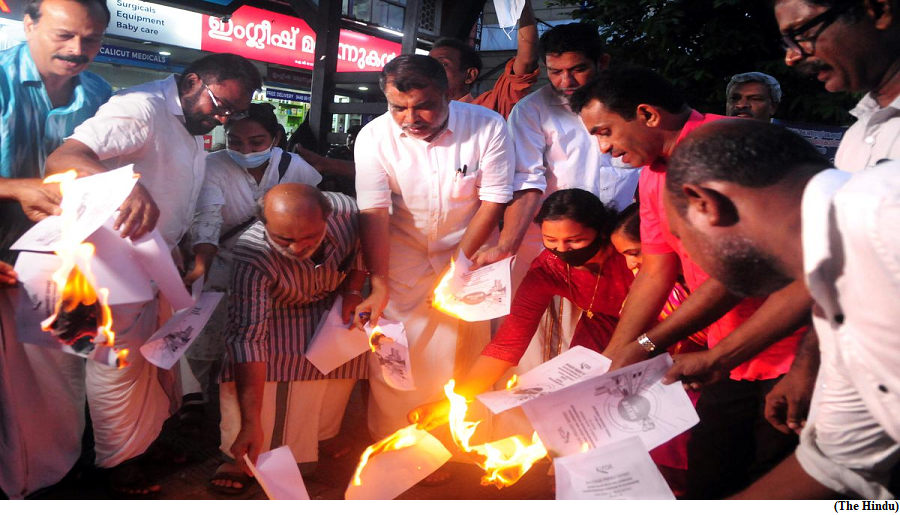135 million Indians moved out of multidimensional poverty in last 5 years, Niti Aayog report (GS Paper 3, Economy)

Why in news?
- Recently, the NITI Aayog released, ‘National Multidimensional Poverty Index: A Progress Review 2023’.
Key Highlights:
- Over 135 million people moved out of multidimensional poverty between 2015-16 and 2019-21.
- Uttar Pradesh has seen the most reduction in poverty, followed by Bihar, Madhya Pradesh, Odisha and Rajasthan. In UP, 3.45 million people were freed from multidimensional poverty.
- In India, 14.96 per cent of people were multidimensionally poor in 2019-2021, down from 24.85 per cent in 2015-16, a significant decline of 9.89 percentage points.
- Poverty in urban areas declined to 5.27 per cent from 8.65 per cent during this period, while poverty in rural areas declined at the fastest rate, to 19.28 per cent from 32.59 per cent.
- These include nutrition, child and adolescent mortality, maternal health, years of schooling, school attendance, cooking gas, sanitation, drinking water, electricity, housing, assets and bank accounts, all of which have seen significant improvements.
Basis of report:
- The report was prepared on the basis of the baseline report of India’s national Multidimensional Poverty Index (MPI) launched in November 2021.
- The second national MPI used the latest household microdata of the all-India National Family Health Survey (NFHS) by the International Institute for Population Sciences in coordination with the Union Ministry of Health and Family Welfare.
- The report is based on data from both the fourth and fifth rounds of NFHS surveys: NFHS-4 (2015-16) and NFHS-5 (2019-2021).
Parameters:
- India’s national MPI captures multiple and simultaneous deprivations faced by households across the three macro-dimensions of health, education and living standards.
- It has 12 parameters and is aligned with the United Nations-mandated Sustainable Development Goals (SDG).
- The MPI value halved to 0.066 from 0.117 and poverty intensity come down to 44 per cent from 47 per cent between 2015-16 and 2019-21.
- India is on track to meet SDG target 1.2 (the goal of reducing multidimensional poverty by at least half) much ahead of the 2030 deadline.
- The government’s dedicated focus on improving access to sanitation, nutrition, cooking gas, financial inclusion, drinking water and electricity has led to significant progress in these areas, the report said, adding there has been significant improvement in all 12 MPI parameters.
Role of Flagship programmes:
- Flagship programmes such as Poshan Abhiyaan and Anaemia Mukt Bharat have contributed to the reduction of health disparities, while initiatives such as Swachh Bharat Mission and Jal Jeevan Mission have improved sanitation across the country.
- The impact of these sanitation efforts has resulted in a rapid and significant improvement of 21.8 percentage points.
- LPG shortage has improved by 14.6 percentage points due to subsidised cooking gas through the Pradhan Mantri Ujjwala Yojana. Initiatives like Saubhagya, Pradhan Mantri Awas Yojana, Pradhan Mantri Jan Dhan Yojana and Samagra Shiksha have also played a major role in reducing multidimensional poverty.
Way Forward:
- Consistent implementation of a variety of highly interlinked programmes and initiatives has resulted in significant reduction of gaps in multiple indicators.
The India UAE deal to trade with rupees
(GS Paper 2, International Relation)
Why in news?
- During Indian Prime Minister’s recent visit to the UAE, the Reserve Bank of India (RBI) and its Abu Dhabi-headquartered counterpart the Central Bank of the UAE signed two memoranda of understanding (MoUs).
- While the first established a framework to promote the use of local currencies for cross-border transactions, the other was for interlinking payment systems.

How will local currencies be promoted?
- The first of the two MoUs aims to establish a Local Currency Settlement System (LCSS) to promote the use of rupee and the dirham bilaterally.
- It will cover all current and permitted capital account transactions. This would enable exporters and importers to send invoices and pay in their respective domestic currencies, which in turn would help the development of the INR-AED foreign exchange market.
- It would also help promote investments and remittances between the two countries. Broadly, the arrangement would help optimise transaction costs and settlement time for transactions, including for remittances from Indians residing in UAE.
Why is it significant for exporters?
- The focus on denominating export contracts and invoices in the local currency helps avert exchange-rate risks (such as when a third currency is being used as a standard), which further facilitates the scope to discover competitive pricing.
- Moreover, it could also lead to enhanced avenues for cooperation among the banking systems of the two countries, thereby contributing to the expansion of trade and economic activity for both.
- The major items of export from India to the UAE include mineral fuels, mineral oils and products, bituminous substances, mineral waxes, followed by pearls, precious stones and metals, electrical machineries and equipment, among other things.
- The major items imported by India are petroleum crude and petroleum related products. India-UAE trade rose to $85 billion in 2022.
- Furthermore, the UAE was India’s third largest trading partner and second-largest export destination in FY2022-23. Conversely, India was the UAE’s second largest trading partner.
What about the interlinking of payment systems?
- The second of the two MoUs links India’s Unified Payments Interface (UPI) with its UAE-counterpart Instant Payment Platform (IPP). This is alongside the linking of card switches, that is, RuPay switch and UAESWITCH.
- Card switches entail facilitating communications and transactions between different payment service providers. The agreement would also explore linking of payment messaging systems of the two countries.
- The UPI-IPP linkage would enable users in either country to “make fast, convenient, safe, and cost-effective cross-border fund transfers”.
- As for card switches, the regulator stated, it will “facilitate mutual acceptance of domestic cards and processing of card transactions.”.
How will this help?
- One of the several issues with sending remittances back home, especially for low wage earners, is the high costs of transactions. This may entail fees and exchange rate margins, among other potential costs.
- In March, the National Payments Corporation of India (NPCI) finalised a collaboration with Singapore’s PayNow for facilitating cross-border real time money transfers.
- Furthermore, the NPCI had in January permitted non-resident accounts with international numbers to be onboarded into the UPI ecosystem. At the onset, it included users from 10 countries — Singapore, Australia, Canada, Oman, Qatar, the U.S., Saudi Arabia, the UAE, the U.K and Hong Kong.
Remittances in India:
- The World Bank noted in the 2023 Migration and Development Brief that India experienced a 24.4% increase in remittances to $111 billion in 2022 on a year-over-year basis. This represented 3.3% of the GDP.
- It further stated that at present, remittance inflows from GCC (Gulf Cooperation Council) countries, which accounts for about 28% of the country’s total remittance inflows, also soared in 2022.
- About 36% of the remittances were attributed to high-skilled and largely high-tech Indian migrants in the U.S., the U.K., and Singapore.
Tracking the new railway proposal for Kerala
(GS Paper 3, Infrastructure)
Why in news?
- In Kerala, a new semi-high-speed railway, expected to cruise at an average speed of 125 kmph has been proposed.
- Set to travel the 420-km Thiruvanthapuram-Kannur north-south corridor, the trains are slated to cover the distance in three and a half hours. The alignment for the trains will be largely that of the alignment suggested in 2015 for the high-speed rail corridor.

What is the new rail project?
- The approximately ₹1 lakh crore semi-high speed train project on standard gauge track was mooted recently by technocrat E. Sreedharan.
- The new proposal is being projected as an alternative to the ₹64,000 crore Thiruvananthapuram-Kasaragod SilverLineproject, which was to cover the 530-km distance at an average speed of about 135 kmph, as per the Kerala Rail Development Corporation Ltd. (KRDCL).
- The KRDCL had mooted 10 stations, each located approximately 55 km away, in the SilverLine alignment, while Mr. Sreedharan has cited the need for 15 stations located every 30 kms, to benefit more number of people.
- The proposed corridor would have a design speed of 200 kmph and can be linked with high-speed or semi-high speed rail projects on standard gauge that could touch Mangaluru and Coimbatore a few years down the lane.
- The Centre and State could pool in with ₹30,000 crore each, while ₹40,000 crore could be raised as loan.
Why are high speed trains a priority?
- Trains in Kerala are operating at rock-bottom speed. Even express trains in the State operate at an average speed of less than 50 kmph due to frequent stops, huge number of sharp curves and the 69-km Ambalapuzha-Thuravur stretch where track doubling work is pending.
- The average speed plummets further to approximately 35 kmph for short-distance passenger trains.
What happened to the high-speed rail corridor and the SilverLineproject?
- In 2014, the State government entrusted the Delhi Metro Rail Corporation (DMRC) with the task of readying a Detailed Project Report (DPR) for a high-speed rail corridor linking Thiruvananthapuram with the northern-most district Kasaragod.
- The DPR which was handed over to the government in 2015 was considered too ambitious and costly and failed to take off.
- The SilverLineproject, proposed by the KRDCL in 2021 met with massive resistance, as it was to be built over a tall embankment constructed over the ground, and would have led to massive displacement of people.
- Environmental activists and others expressed fears that this would worsen flooding in many areas, since the embankment would block natural flow of water even if drains and canals were built at intervals.




![]()